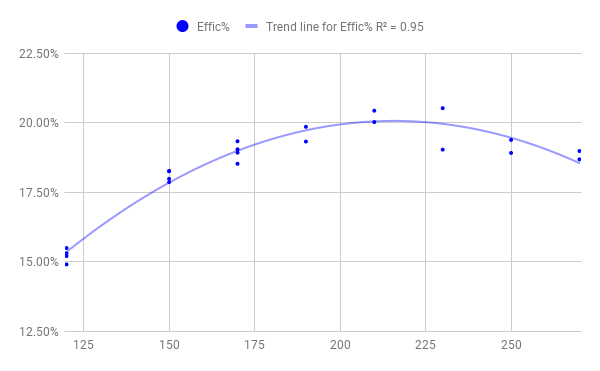One for the gurus @ManofSteele @xertedbrain. As an average efficiency is used to calculate calories from Kj’s the absolute amount of Fat & Carbs will obviously depend on that efficiency. My question is if an individuals particular efficiency is much lower do the extra calories used come from mainly carbs or fat or is it a proportional increase in both? OR I am I overthinking this?
I believe the calculation is related to your LTP and power curve so your unique efficiency is considered in the algorithm. Stay below LTP to maximize fat burn and minimize carbs, go harder then carb burn increases rapidly. I think fat burn starts to drop off at this point or at least plateaus as it takes your body to long to convert the fat. Go above TP and you burn primarily carbs.
Efficiency can be lowered for example by increasing or lowering cadence outside normal ranges. If one simply interprets this as an effective increase in overall power generated, one could argue that the increase would bias more carbs than fat.
I was talking about the efficiency in turning chemical energy into mechanical energy which can typically vary from 17-24% which dramatically affects how many calories you use for the same amount of kJ’s. People with a larger proportion of fast twitch muscle fibres typically have this efficiency at the lower end I believe.You can find out what yours is using a metabolic cart.
Most platforms use a 25% gross efficiency, which means that the estimated caloric burn (in kcal) is 1:1 with kJ work performed on a ride. However, based on the literature that I’ve read, most athletes are not close to a 25% gross efficiency. Having a lower GE simply means that the ratio will be slightly greater than 1:1 in terms of kcal:kJ work performed. As Cary mentioned, the only way to know an athlete’s GE would be to determine it in a lab. However, even that only provides a snapshot of GE at a single point in time. GE might vary with intensity, fatigue, etc.
My thought is that the “additional” (not really additional, just not reported by most other platforms) calories would be a proportional increase in both, depending on the intensity you’re riding at.
@carytb Love to hear users asking questions about the software. I think all of us are rather curious folk… Here’s another thought that @xertedbrain and I have discussed before: Is there any relationship between GE and MPA? Does GE decrease with MPA? Why/why not? Maybe we need to get a metabolic cart set up in the Xert Breakthrough Lab… 
As with so many aspects of physiology, there are processes happening where we can only capture point in time measurements. Having a way to model the changing aspects of physiology (accumulation of fatigue, for example) allows one to interpolate and extrapolate on the physiology from the point-in-time data. You could measure GE for example at one cadence and power output and measure it again at the same cadence and power output and get a very different result, due to accumulated fatigue. GE would thus be a function of fatigue, not just power and cadence. For this, you’ll need to capture data in between and before too, to understand why and to be able to then infer what may have caused the shift. In Xert, we work towards modeling how previous efforts impact current efforts and future efforts too. It’s the model of the athlete that’s more useful than the raw data in the end.

This is a graph of my Efficiency from backing 2018 at a cadence of 90rpm. Interestingly it appears to peak at approx where I think my TP was at that time (probably coincidence). Unfortunately my TP progression in Xert is garbage due to me using a left only PM and having an large Left/Right power imbalance which I didn’t know about.
Not surprised that 90rpm would be your most efficient if your power is roughly near TP. Makes perfect sense since that’s where a lot of good cyclists’ cadence will end up near TP. At 300W, the cadence would be a bit higher. At 600W, likely closer to 110rpm.
Interesting. I was told to hold my cadence at 90rpm throughout the test rather than use a self selected cadence. Could this be part of the reason for the lower efficiencies at the lower power levels?
Yes. Lower power needs lower cadence (0W needs 0 cadence!) since the internal work increases with cadence.